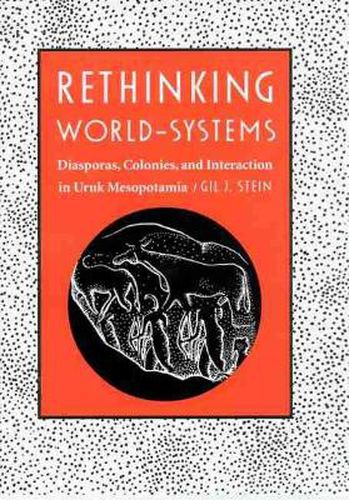Readings Newsletter
Become a Readings Member to make your shopping experience even easier.
Sign in or sign up for free!
You’re not far away from qualifying for FREE standard shipping within Australia
You’ve qualified for FREE standard shipping within Australia
The cart is loading…






The use of world-systems theory to explain the spread of social complexity has become accepted practice by both historians and archaeologists. Gil Stein now offers the first rigorous test of world systems as a model in archaeology, arguing that the application of world-systems theory to noncapitalist, pre-fifteenth-century societies distorts our understanding of developmental change by overemphasizing the role of external over internal dynamics. In this new study, Stein proposes two complementary theoretical frameworks for the study of interregional interaction: a distance-parity model, which views world-systems as simply one factor in a broader range of intersocietal relations, and a trade-diaspora model, which explains variation in exchange systems from the perspective of participant groups. He tests his models against the archaeological record of Mesopotamian expansion into the Anatolian highlands during the fourth millennium B.C. Whereas some scholars have considered this Uruk expansion to be one of the earliest documented world-systems, Stein uses data from the site of Hacinebi in southeastern Turkey to support his alternate perspective. Comparing economic data from pre- and postcontact phases, Stein shows that the Mesopotamians did not dominate the people of this distant periphery. Such evidence, argues Stein, shows that we must look more closely at the local cultures of peripheries to develop realistic cross-cultural models of variation in colonialism, exchange, and secondary state formation in ancient societies. By demonstrating that a multitude of factors affect the nature and consequences of intersocietal contacts, his book advocates a much-needed balance between recognizing that no society can be understood in complete isolation from its neighbors and assuming the primacy of outside contact in a society’s development.
$9.00 standard shipping within Australia
FREE standard shipping within Australia for orders over $100.00
Express & International shipping calculated at checkout
The use of world-systems theory to explain the spread of social complexity has become accepted practice by both historians and archaeologists. Gil Stein now offers the first rigorous test of world systems as a model in archaeology, arguing that the application of world-systems theory to noncapitalist, pre-fifteenth-century societies distorts our understanding of developmental change by overemphasizing the role of external over internal dynamics. In this new study, Stein proposes two complementary theoretical frameworks for the study of interregional interaction: a distance-parity model, which views world-systems as simply one factor in a broader range of intersocietal relations, and a trade-diaspora model, which explains variation in exchange systems from the perspective of participant groups. He tests his models against the archaeological record of Mesopotamian expansion into the Anatolian highlands during the fourth millennium B.C. Whereas some scholars have considered this Uruk expansion to be one of the earliest documented world-systems, Stein uses data from the site of Hacinebi in southeastern Turkey to support his alternate perspective. Comparing economic data from pre- and postcontact phases, Stein shows that the Mesopotamians did not dominate the people of this distant periphery. Such evidence, argues Stein, shows that we must look more closely at the local cultures of peripheries to develop realistic cross-cultural models of variation in colonialism, exchange, and secondary state formation in ancient societies. By demonstrating that a multitude of factors affect the nature and consequences of intersocietal contacts, his book advocates a much-needed balance between recognizing that no society can be understood in complete isolation from its neighbors and assuming the primacy of outside contact in a society’s development.